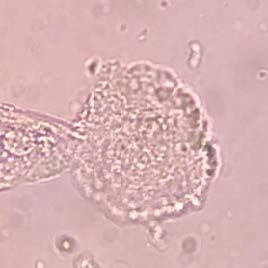Management of Abnormal Vaginal Discharge in Reproductive-Aged Women
Main Article Content
Abstract
Abnormal vaginal discharge is one of the most common presenting symptoms at obstetric-gynaecologic clinics. It can be caused by either vaginal dysbiosis or infections of which a part is sexually transmitted infections (STIs). STI is the global health issue that also results in marked economic burden. The delayed or improper treatment may lead to severe morbidity or even mortality. The national statistics have shown the rising trend of STIs, especially among young people aged 15-24 years. The most commonly reported STIs which cause abnormal vaginal discharge are gonococcal and non-gonococcal cervicitis. In this year, the Division of Autoimmune Deficiency Syndrome (AIDS) and Sexually Transmitted Infections (STIs), Thai Ministry of Public Health, in collaboration with Institute of HIV Research and Innovation (IHRI), Institute of Dermatology, Faculty of Medicine, Chulalongkorn University, and Faculty of Medicine Siriraj Hospital, Mahidol University, has issued the Thai national guideline for diagnosis and treatment of sexually transmitted infections, 2022 based on the current knowledge and available medications in Thailand. In line with the national guideline, the Royal Thai College of Obstetricians and Gynaecologists has also launched the treatment guideline for managing reproductive-aged womenwith abnormal vaginal discharge. The guideline aims to provide obstetricians, gynaecologists and medical practictioners with updated diagnostic tools and treatment alternatives of each cause of abnormal vaginal discharge. However, the implementation of the guideline can vary according to the context of each healthcare setting, including resource, manpower, characteristics of clients etc. Not being able to comply with the guideline does not bring about any legal impact.
Article Details

This work is licensed under a Creative Commons Attribution-NonCommercial-NoDerivatives 4.0 International License.
References
World Health Organization. Sexually transmitted infections (STIs) 2021 [Available from: https://www.who.int/news-room/fact-sheets/detail/sexually-transmitted-infections-(stis).
HIV INFO HUB. Rate of five main STIs reported case in Thailand, 2009-2020 2021 [Available from: https:// hivhub.ddc.moph.go.th/epidemic.php.
Chayachinda C, Chinhiran K, Kittiyaowamarn R, Chaithongwongwatthana S, Teeratakulpisarn N. The Thai 2022 Sexually Transmitted Infections Treatment Guideline: Abnormal vaginal discharge. Thai J Obstet Gynaecol 2022;30:222-233
Amabebe E, Anumba DOC. The Vaginal Microenvironment: The physiologic role of Lactobacilli. Front Med (Lausanne) 2018;5:181.
Chayachinda C, Thamkhantho M, Chalermchockcharoenkit M, Nuengton C, Thipmontree W. Characteristics of clients at the Siriraj Female STD Clinic during 2011-2015. Siriraj Medical Bulletin 2018;11:182-9.
Sobel JD. Vulvovaginal candidosis. Lancet 2007;369:1961-71.
Chayachinda C, Thamkhantho M, Ngamsakulrungroj P, Leeyaphan C, Tulyaprawat O. Effect of intravaginal gentian violet for acute vaginal candidiasis treated with a single dose oral fluconazole: a randomised controlled trial. J Obstet Gynaecol 2022. doi: 10.1080/01443615.2022.2035336
Saxon C, Edwards A, Rautemaa-Richardson R, Owen C, Nathan B, Palmer B, et al. British Association for Sexual Health and HIV national guideline for the management of vulvovaginal candidiasis (2019). International Journal of STD & AIDS 2020;31:1124–44.
Thamkhantho M, Chayachinda C. Vaginal tablets of dequalinium chloride 10 mg versus clotrimazole100 mg for vaginal candidiasis: a doubleblind, randomized study. Arch Gynecol Obstet 2021;303:151-60.
Amsel R, Totten P, Spiegel C, Chen K, Eschenbach D, Holmes K. Nonspecific vaginitis. Diagnostic criteria and microbial and epidemiologic associations. Am J med 1983;74:14-22.
Chayachinda C, Baukaew L, Thamkhantho M, Bangpichet A, Sodsee S, Pharkjaksu S. Clue cell as a single diagnostic tool for bacterial vaginosis during pregnancy. J Med Assoc Thai 2020;103:353-8.
Nugent RP, Krohn MA, Hillier SL. Reliability of diagnosing bacterial vaginosis is improved by a standardized method of gram stain interpretation. J Clin Microbiol 1991;29:297-301.
Kingston M, Bansal D, EM C. 'Shelf life' of Trichomonas vaginalis. Int J STD AIDs 2003;14:28-9.
Kaambo E, Africa C, Chambuso R, Passmore J. Vaginal microbiomes associated with aerobic vaginitis and bacterial vaginosis. . Front Public Health 2018;6:78.
Donders G, Ruban K, Bellen G. Selecting anti-microbial treatment of aerobic vaginitis. Curr Infect Dis Rep 2015;17.
Donders GG. Definition and classification of abnormal vaginal flora. Best Pract Res Clin Obstet Gynaecol 2007;21:355-73.
Suresh A, Rajesh A, Bhat R, Rai Y. Cytolytic vaginosis: A review. Indian J Sex Transm Dis & AIDS 2009;30.
Horner P, Blee K, O'Mahony C, Muir P, Evans C, Radcliffe K. 2015 UK National Guideline on the management of non-gonococcal urethritis. Int J STD AIDS 2016;27:85-96.
Chayachinda C, Rekhawasin T. Reproductive outcomes of patients being hospitalised with pelvic inflammatory disease. J Obstet Gynaecol 2017;37:228-32.


